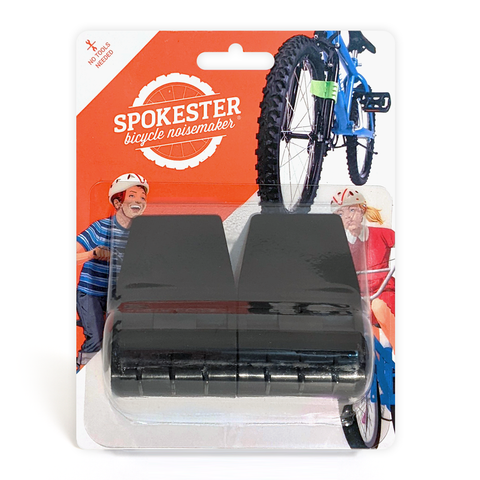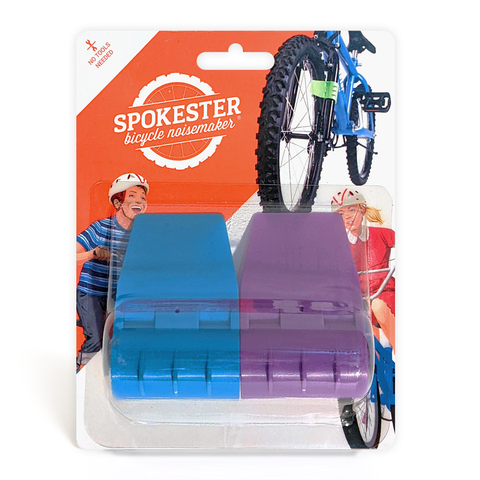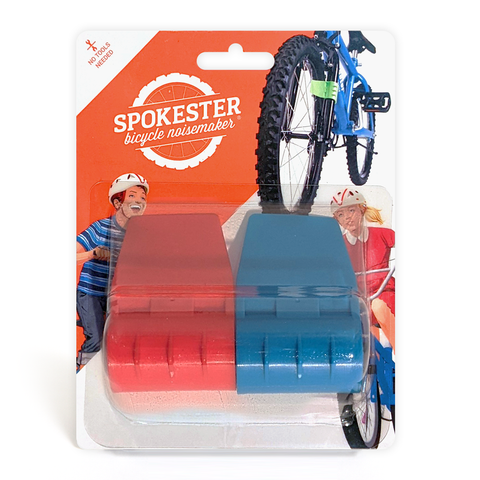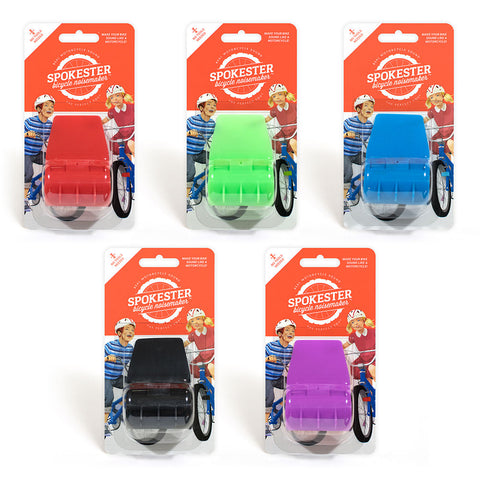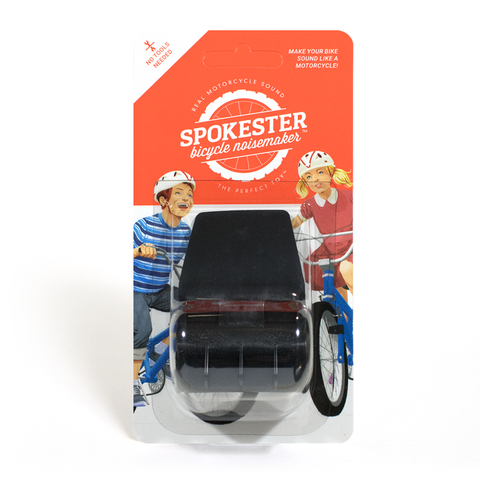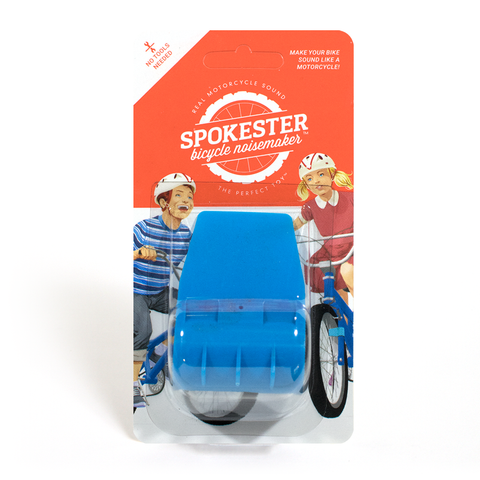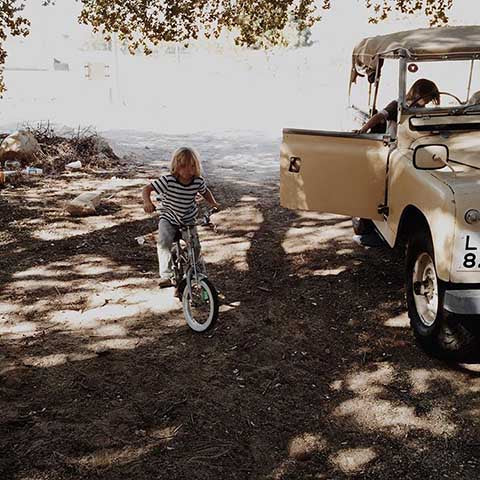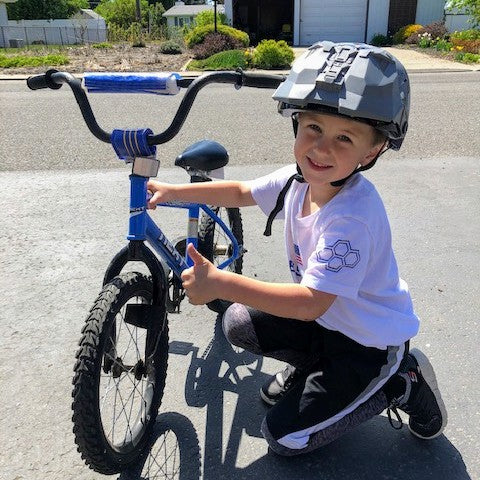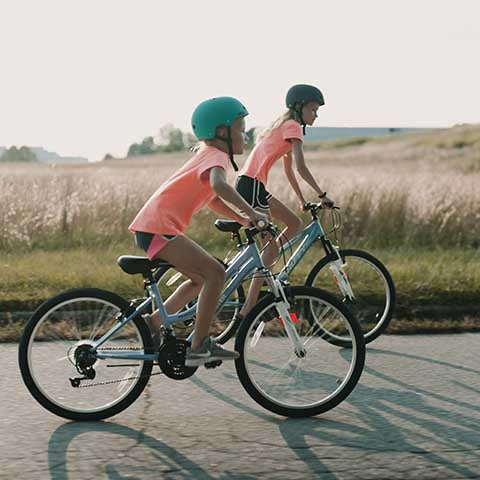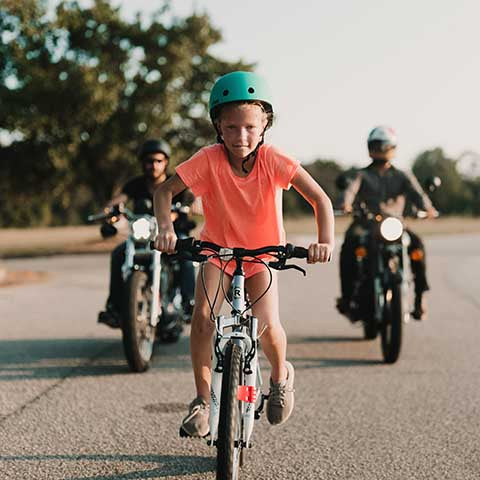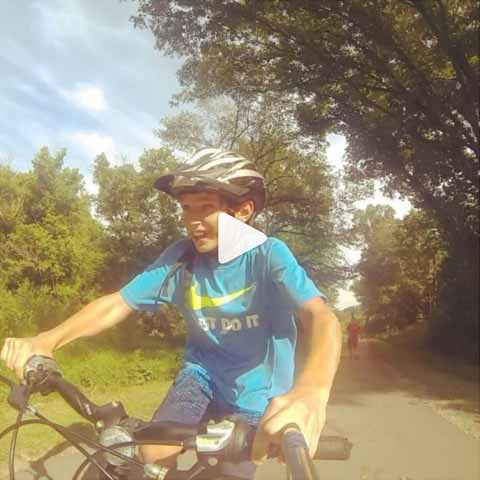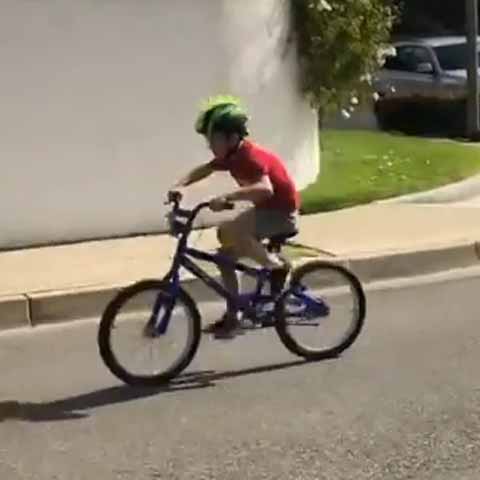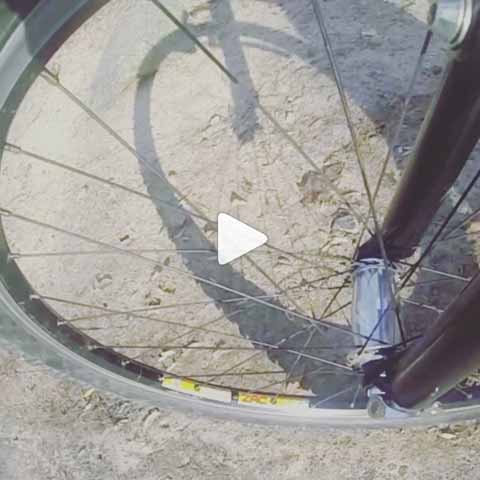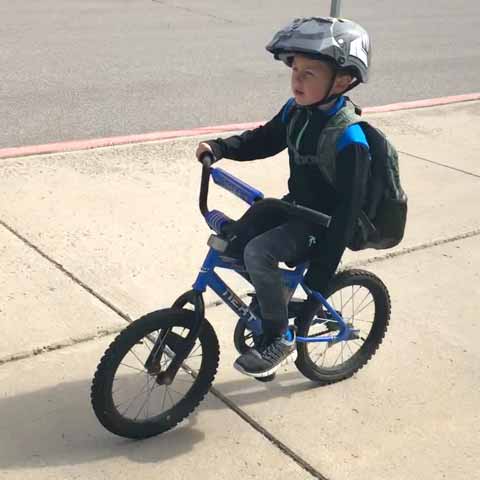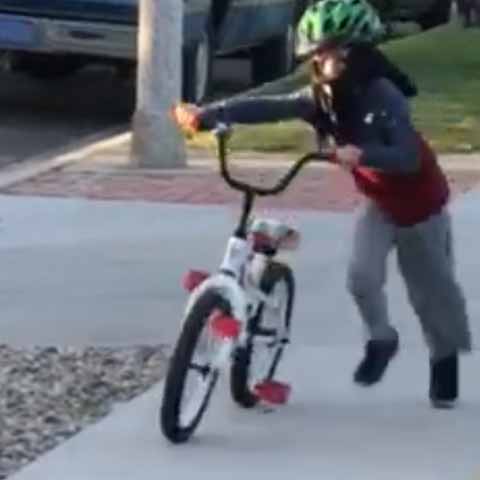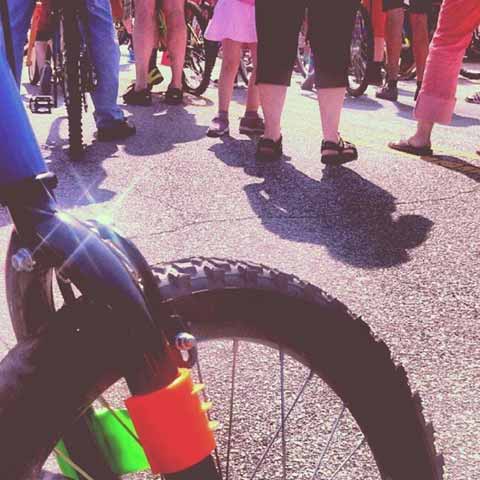A Useful Buying Strategy for Used Dirt Bikes
Should I buy new or used?
It's one of those classic questions asked about everything from houses and cars to furniture and books. As you can probably guess by the title, it also applies to dirt bikes.
Going used is a great way to get a DB in good condition and save some money at the same time, especially if you're new to the sport and unsure whether it'll be a long-term thing. But, like used cars, you have no idea how much someone's hand-me-down has been put through the ringer. This is especially true with sale-by-owner with no certified pre-owned stamp from a dealer to mitigate your risk. If you're not on your game when shopping for a ride, you may just get taken for one instead.
We're here to make sure that doesn't happen to you. The best way to avoid buyer's remorse is to arm yourself to the chinstrap with information that will help you make smart decisions. We like to use a strategy that chops things up into three main areas:
- Rider Profile
- Shopping Process
- Dirt Bike Purchase
Whether buying for yourself or someone else, including any up-and-coming shredders in the family, this approach will give you the confidence you need to spot the best deal for you.
#1: Rider Profile
This may sound obvious, but consider who the primary rider will be. Is it you, a 6'5" enduro fan with a decade of experience on the trail? Or is it little Jenny, a pint-sized preteen who's become enamored with Supercross but doesn't know a clutch from a sprocket? Getting these details right is big time.
Dirt-Bike Style
Just like pedal-powered mountain biking, there are a variety of DB categories. Motocross, trail, dual, freestyle, etc., etc., etc… each of these uses different kinds of bikes in different ways.
The key here is fit for purpose. Gear ratios and engines are set up differently for each area of the sport. Maybe you think motocross bikes are the be-all end-all of the dirt-biking world. But, if you take one to the backcountry, you're going to regret your decision more and more with every successive stall-out.
Just getting into DBing and not sure which way to go? Generally speaking, trail or dual-sport bikes are good options to consider for first-timers. They're more versatile and easier to ride than other alternatives.
Bike Power
As we alluded to above, dirt bikes are built to perform differently based on how and where they're ridden. The way a bike is powered is based on several variables, including something called "stroke." This refers to piston movement during the engine's combustion cycle. You'll come across this during your buyer journey, so allow us to elaborate.
The bikes you'll browse will be either 2-stroke or 4-stroke. Traditionally, a 2-stroke model is more explosive, which is why it's usually associated with motocross sports. Despite the gratuitous noise and fumes compared to 4-strokes, up-front investment and repair costs are typically lower.
On the flip side, 4-stroke bikes are bulkier since they're not built for track-style racing. Although more expensive and maintenance-heavy than 2-strokes, their engines tend to offer more torque on the bottom end, smoother transfer of horsepower, and a longer lifespan. This makes them attractive options for non-competitive riders as well as rookies.
Skill and Experience
If you played sports at some point in your life, odds are you were told at one point or another to "stay within yourself." Dial up this wisdom when it comes to dirt biking. If you're not ready for a jet engine, then cool it on the cc side for the time being.
That's another term you'll be seeing rather often. The abbreviation "cc" stands for cubic centimeters, or the size of the engine's cylinders. At the risk of oversimplifying: the bigger the engine, the more ccs it has, the more air it can take in, and ultimately the more power it can produce.
A number of experts recommend something in the neighborhood of a 250cc 4-stroke for adult beginners. It has enough juice to keep things fun but not enough to slingshot you through a pine grove if you briefly lose control. Younger kids should probably stay under 110cc until they gain enough experience. Super-young ones should start with the lowest option, 50cc.
Bike Parts and Features
Not all dirt bikes require the same components. For instance, motocross bikes are used on closed-course tracks. They don't need lights, fuel gauges, or other instrumentation that serve no purpose in a race setting and will only weigh them down. On the other hand, dual-sport bikes can be ridden on- or off-road. They do need these parts for safety and legal reasons. So, quite simply, know what you will and won't need.
One feature we'd like to call out in particular is the clutch. Almost all DBs have a manual clutch, which has a major impact on how bikes perform for skilled riders. Some kids' models offer an automatic (or none at all) to help children ease into the riding experience by learning more basic skills first.
Speaking of younglings and basics, how about training wheels? Yeah, yeah, we know how a lot of you parents out there feel about traditional training wheels versus new-age balance bikes. For those who don't see them as the bane of the biking world, the same tool is available for small beginner DBs if you'd like to give them a go. Nothing wrong with a couple confidence-boosters on either side if that's what it takes to get the kiddos jazzed up on motor sports.
Rider Size
On the importance scale, sizing a dirt bike is no different than sizing a bicycle, especially for kids just starting out. Make sure you feel comfortable in the seat, or at least as comfortable as possible depending on the model (some aren't meant for extended sitting). You should be able to reach the handlebars easily, and your feet should touch the ground with legs extended.
Weight is also important relative to how a person intends to use the bike. For example, a 250cc bike should be sufficient for mature beginners under 150lbs or so. Think about something in the 250–450cc range above that threshold. Weight can impact what sort of suspension system you look for as well.
With kids, growth spurts and skill spurts are as unpredictable as they are inevitable. Do your best to choose a bike that won't be outgrown too quickly (all the more reason to go used in the first place, right?). Stick with a model your little one is comfortable with until he or she has gained enough experience to take things up a notch in terms of size and power.
#2: Shopping Process
Got your rider specs in hand? Good deal. Now it's time to switch gears and begin focusing on the actual dirt-bike market. Just make sure you take care of some baseline due diligence before you jump right into search mode.
Budget
Hopefully you know how much you're willing (or able) to spend on a dirt bike (if not, figure it out pronto). But, have you considered how that wad ‘o cash breaks up? The bike itself is only part of the equation. It's also a very good idea to account for possible repairs, replacements, or upgrades you'll want—or need—to make to your ride.
If your clan is just entering the exciting world of two-wheeled mudslinging, you'll also need to grab all the right gear for you and the younger members of the family based on your riding style. This may include things like chest protectors, goggles, gloves, and elbow and knee pads. It will always include a helmet. And for the record, you can't just take your kids' bicycle helmets and expect the same level of protection because they're starting slowly. Just as your bikes should be fit for purpose, so should your equipment.
Local Bike Dealers
It's perfectly okay to get started with a nominal IQ when it comes to bike operation, mechanics, or maintenance. We all have to start somewhere, you know? What's not okay is to shell out for a top-of-the-line racer for the sake of ego. Don't be that guy or gal.
When in doubt about the right model, talk to your nearby DB gurus. These guys can help in a ton of different ways. Discuss your dirt-biking interests and give them an honest take on your experience level so they can make the right recommendations for you and your fam. Remember, you're not just buying a bike, you're also investing in future parts and services, so build those relationships early.
Manufacturer Brands
Like grandad always said, "You get what you pay for." This tends to be pretty true, making it especially wise to remember when it comes to buying things that combust under your pants. Reputable DB brands like Suzuki, Yamaha, Kawasaki, and Honda all offer peace of mind that the machine won't constantly fall apart on you. If it does have an issue, parts are easier to find and replace than they are for knockoffs.
As you can imagine, a reliable bike is an even higher priority for kids. They're going to fall, crash, and otherwise screw up over and over again. They need a ride that not only stands up to the beating, but that doesn't conk out at the wrong time. Children should concentrate on building confidence in their skills without having to worry about the $10 junker you settled for.
Limiting your search to more prominent manufacturers also makes the shopping process more efficient. Eventually, you'll want to research the individual bike(s) you're looking for. Tips on what to ask about and any common issues associated with particular brands or models are easier to find with these guys than more obscure dirt-bike brands. This makes you a smarter buyer and deters any sneaky sellers from pulling a fast one on you.
Distribution Outlets
You've got plenty of options these days when it comes to finding bikes for sale. Dealerships that offer used dirt bikes are a fine place to start. You'll interact with a credible merchant and may be able to browse multiple bikes at once. Some even throw in limited warranties. Although you may not pay ground-floor prices, there's the least amount of risk going through an established business.
That said, dealing directly with private sellers is quite common in the dirt-bike market. Local tracks and riding clubs also rank high on the credibility meter since members are predisposed to taking care of one another. If these aren't options for you, DB forums can be useful sites. Then there's always craigslist. Just remember that you're not buying a vintage CD player from some dude across town. You'll really want to go the distance when it comes to asking the right questions, which we'll get into here shortly.
On the other hand, craigslist is a nice way to gauge pricing for used dirt bikes near you. Kelley Blue Book and the National Automobile Dealers Association are also great resources. This is another reason to connect with your local bike shop or mechanic first. They'll help give you a sense of what your particular brand or model is going for so you don't get ripped off by some shadeball. Who knows, they may even be able to help you find one from a trusted source in their network.
#3: Dirt Bike Purchase
Okay, you're now a fountain of DB knowledge and know what you're looking for. You, sir/ma'am, are now ready to start interacting with sellers. Don't worry, this doesn't have to be a painful process as long as you follow a few best practices during the hunt.
Prequalification
To be clear, this is not prequalification for you, it's prequalification for them. You should know who and what you're dealing with before you ever show up at someone's garage. Emailing, texting, faxing, paging, carrier pigeoning, etc. is all well and good, but at the very least give the person a call at the outset of the transaction. An actual conversation can tell you a lot more than words on a page.
When you do connect, get the vehicle identification number (VIN) and check it through the DMV. No VIN may be a red flag that the bike's stolen. If you're buying from someone in a state that requires a title for it, double-check that everything matches up for the same reason.
You'll also want to inquire about the bike's history. As in any negotiation where you're the buyer, remember that it's your money, so don't be afraid to ask some pointed questions. These are a couple good ones to start with:
- How long have you had the bike?
- Did you buy it new or used?
- Has the bike had any problems or been in any accidents?
- Do you have the maintenance records?
- Have you made any upgrades or notable part replacements?
- How many miles are on the bike? In the case of track models, how may races has it been in?
- Why did you decide to sell it?
Bike Inspection
Your potential peddler may sound like a peach on the phone, but that doesn't get anyone off the hook. It's critical to check the condition of various parts of the bike, particularly those that are more expensive to replace. Some things like the oil and air filter you'll want to switch out anyway, but seeing their state before you buy can give you a sense of how the owner took care of the vehicle from nose to tail.
Put the following parts on your checklist:
- Engine: This is a big one. If you end up needing to replace it, you may as well have bought new. Let it idle for a little while and listen for rattles and knocks that may indicate busted cranks, valves, or other components.
- Frame: Check for cracks and/or bends, which may be signs of collisions or serious damage. Definitely look for these around any welded areas.
- Wheels: Give them a spin and look for unwanted wobbles. Loose spokes, cracked hubs, and worn tread are all things you should also address with the owner.
- Suspension: This is a key part of any DB no matter what side of the sport you're on. You'll want to check the oil and find out when the system was last serviced.
- Drivetrain: Spot-check the chain pins and look for any kinks. Also eye the teeth on the sprockets for wear or chips. You really don't want this part of the bike in questionable condition.
- Radiator: Take a look at this before starting the bike. Fluids should be clean (and full), and there should be no blockage to the airflow.
- Oil: Sensible sellers will have changed the oil recently. If it's dark and gross, that's often a telltale sign that the person doesn't take very good care of his/her toys. Buyer beware.
- Air filter: Pull this guy out and take a close look. Again, shrewd owners will make sure they have clean ones on their bikes when trying to sell. Since it's such an easy and necessary part to replace regularly, an ugly one says a lot about what you can expect elsewhere—including in places you can't check as easily.
Test Ride
Looking the bike up and down is great and everything, but there's nothing like taking it for a spin to really get a feel for things. You'll want to listen for strange sounds that might indicate grinding, loose or failing parts, and other uh-ohs that may give you pause. Test the clutch for slippage and the gears for stickiness or difficulty shifting.
Still iffy on things? This is where that local dealer relationship comes in handy. Ask the seller if you can have a pro check it out. This shouldn't be an issue—another red flag if it is—so figure out a good time to meet at your choice of shop for the inspection.
The Sale
You feel comfortable with the seller. The bike checks out. You've agreed to the price. All that's left is the paperwork. Do not get lazy down the stretch. You must, for your own good, get a bill of sale that details the transaction and confirms you've paid for the vehicle in full. There are loads of templates and guides online for bills of sale, but you can always consult a local lawyer if it helps you sleep better.
You'll also need to figure out whether or not your state requires a title for your dirt bike. If it does, you'll need to register the bike in your name. If it doesn't, then don't worry about it… unless you intend to take your new wheels to the streets. Some states won't title DBs for this, but legit services that specialize in making off-roaders street legal do exist.
Bottom line, just make sure you're doing things by the books to avoid any headaches down the road.
CONGRATS! You're now the proud owner of a super-duper used dirt bike! Great stuff. Still, make a concerted effort to start slow and get a good feel for how the bike rides and operates before shredding your nearest state park to pieces. That obviously goes double for newbies and kiddies.
Seeya out there.
← Older post Newer post →
